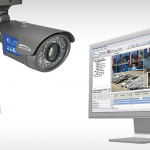The categories of business phone systems can be broadly divided in to three: KSU-Less phones, Private Branch Exchange (PBX) systems and the Key systems. The choice depends on the number of extensions required and the features needed.
Ksu-Less Systems
Companies employing less than ten employees would find KSU-Less type of business phone systems the most suitable. However, not all companies that require less extensions can make effective use of this system. There are certain additional features that are available only on Key or PBX systems and KSU-less becomes inefficient when compared to other types. An advantage of the KSU-Less system is that it can be easily unplugged as well as relocated.
Key Systems
A key system is typically used in organisations that have a requirement of around five to forty extensions. The main feature of a key system is that it provides a function wherein a call can be made from one extension to another extension in the same premises. It does away with the trouble of someone else picking up the line that is being used. However, these features are not available on ordinary phones. A key system is usually less flexible compared to a PBX system, the next in line.
Private Branch Exchange (PBX) Systems
The PBX systems works best for organisations having large number of extensions or for the business phone systems that require advanced functions. PBX systems are extremely expensive and usually afforded only by huge corporations. These corporations generally need hundreds of extensions within the same business structure and the PBX system suits their need.
PBX And Key Systems (hybrids)
Today, the available systems offer the best of both worlds. Key systems now have features that were exclusive to the flexible PBX systems. The advanced systems are referred to as ‘Hybrid’ systems and are slowly gaining popularity.





